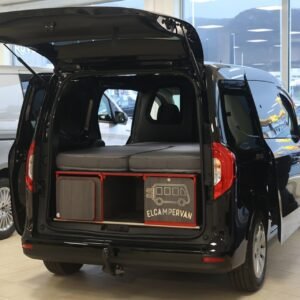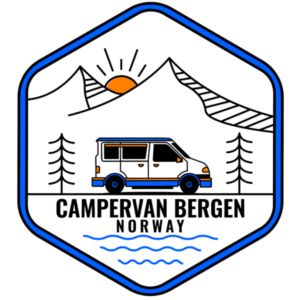
Understanding License and Age Requirements
When planning a trip to Norway in a campervan, it is vital to familiarize yourself with the specific license and age requirements that accompany such rentals. In order to operate a campervan in Norway, drivers must meet certain criteria that encompass both age and documentation. First and foremost, the minimum age requirement is set at 23 years. This stipulation reflects the insurance policies commonly associated with campervan rentals, as younger drivers are often viewed as higher-risk due to inexperience.
Additionally, it is important to note that drivers must possess a valid driver’s license for a minimum duration of one year prior to the rental date. This requirement ensures that all drivers have sufficient experience behind the wheel. If you are a driver from a non-English speaking country, possessing a valid driver’s license alone may not suffice. In such cases, a certified International Driving Permit (IDP) is generally required, serving as a translation of your license and aiding in communication with local authorities. To obtain an IDP, drivers must apply through a designated organization in their home country, typically requiring a valid driver’s license, passport-sized photographs, and a nominal fee.
To prepare for campervan rental in Norway, it is advisable to check that all necessary documentation is in order well before your travel dates. This could prevent any last-minute issues that might arise at the rental location. Furthermore, it is wise to consult the rental company’s policies regarding licenses and age limits to ensure compliance. Understanding these licensing and age requirements will not only facilitate a smoother rental process but will also enhance your overall travel experience in the beautiful landscapes of Norway.
Insurance Options and Safety Considerations
When embarking on a campervan adventure through the stunning landscapes of Norway, understanding insurance options is crucial for ensuring a secure and enjoyable trip. Rental companies typically offer several insurance packages that can significantly affect your financial liability in case of an accident or damage to the vehicle. The most common form of insurance provided is the Collision Damage Waiver (CDW). This coverage generally limits the financial liability for damage to the rental campervan, but it may come with a deductible that the renter must pay in the event of an incident.
For travelers seeking greater peace of mind, the Super Collision Damage Waiver (SCDW) is often recommended. This enhanced coverage reduces the deductible amount, offering broader protection against potential damages. It is advisable to carefully review the specific terms associated with the SCDW, as different rental companies may have varying policies regarding what is and isn’t covered. Additionally, some companies may provide options for personal accident insurance, which compensates for medical expenses related to injuries sustained during the rental period.
Understanding these insurance options is essential for travelers as they navigate Norway’s diverse driving conditions, which can include narrow mountain roads and coastal routes subject to unpredictable weather. Moreover, it’s imperative to familiarize oneself with the rental agreement’s terms and conditions to avoid surprises. This knowledge ensures that travelers are fully aware of the coverage limits, the claims process, and any exclusions that may apply. By taking these safety considerations into account and selecting the appropriate insurance coverage, renters can focus on enjoying the breathtaking Norwegian scenery while being adequately protected against unforeseen risks.
Navigating Toll Roads and Mileage Limits
When planning a road trip through Norway, understanding the toll road system is crucial, as it significantly influences the overall cost of your journey. Norway has an extensive network of toll roads, which are often equipped with automatic toll collection systems that utilize an Autopass tag. This tag, which is typically provided by your campervan rental company, allows for seamless passage through toll gates without stopping to pay manually. It’s beneficial to familiarize yourself with how this system operates to avoid any surprises during your travels.
Before embarking on your journey, it is advisable to inquire about the process for prepaying toll deposits associated with your rental agreement. Many rental companies require you to prepay a certain amount for tolls, which is deducted as you pass through various toll points. Understanding this system can help you budget for your trip more effectively and ensure a smooth travel experience
After your trip, any unused toll balance can be refunded, but this process may vary between rental companies. It is essential to keep track of your journeys and the tolls incurred to facilitate this refund process. Additionally, be aware that most campervan rental agreements include daily mileage limits. Exceeding these limits may result in additional charges, which can add up quickly if not managed properly. To avoid unexpected fees, carefully plan your itinerary and monitor your daily mileage throughout your trip.
In conclusion, navigating Norway’s toll roads and understanding the mileage limits of your campervan rental is vital for an enjoyable road trip. By grasping these elements, you can manage your travel expenses effectively, ensuring a more budget-friendly adventure across this beautiful Scandinavian country.
Essential Campervan Features and Amenities
When renting a campervan in Norway, it is crucial to understand the essential features and amenities that these vehicles offer, as they cater specifically to the needs of travelers navigating the diverse Norwegian landscape. Most campervans come equipped with several sleeping spaces, typically designed to accommodate two to four people comfortably. The sleeping arrangements vary from fixed beds to convertible sofas, allowing for flexibility depending on the size of your travel group.
Kitchen facilities are another key feature in Norwegian campervans. A well-equipped kitchen is vital for preparing meals on the go, and it typically includes a stove, refrigerator, sink, and essential cooking utensils. Travelers can expect to find sufficient storage for food and other items, making it convenient to stock up on local ingredients from nearby grocery stores or farmer’s markets.
Given Norway’s varying climate, a reliable heating system is an important amenity in campervans. Most models come equipped with either a built-in heater or portable heating options that ensure a comfortable temperature during chilly nights, enhancing the overall travel experience. Additionally, many campervans feature insulation designed to minimize heat loss and provide travelers with an enjoyable environment, irrespective of the weather outside.
Furthermore, optional add-ons are often available for rent, enhancing the campervan experience. These may include GPS systems that are particularly useful for navigation through the rugged terrain and remote areas. Camping gear such as outdoor furniture, portable grills, and additional bedding can also be rented to suit individual preferences. Understanding these essential features and amenities will help travelers make informed decisions when renting a campervan in Norway, ensuring a comfortable and enjoyable adventure.
